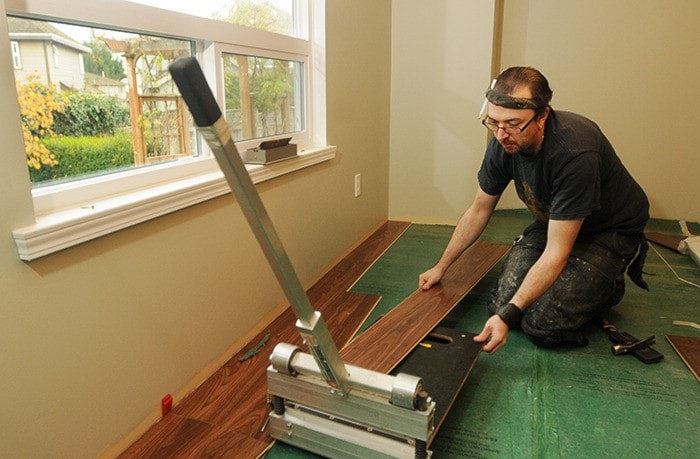Anything worth doing is worth doing well, goes the old chestnut, and when it comes to your biggest investment – your home – that saying definitely holds true.
So if you decide to invest in new laminate flooring for your home – and if you’re planning to do the work yourself – it won’t hurt to have these handy tips from veteran flooring technician Steve Towers in your back pocket.
Towers is the owner of Stellar Floor Installations, and has handled most of the laminate, hardwood and engineered flooring installations for Maple Ridge Carpet One for the past decade.
“The minute I walk into a house, I can tell whether the laminate flooring was installed professionally or not,” says Towers. “It’s the details and the finishing mostly that give it away.”
So what is the flooring professional looking for to make such a determination? The answer is in the transitions, baseboards and edges around doors.
“Pretty much anyone can click the boards together,” says Towers, “but a good flooring job is one where every cut is covered so you don’t see them.”
The process of starting a good laminate flooring installation begins with the choice of quality materials versus cheaper products. Buy the best you can afford because, like most things, quality makes a difference, says Towers.
It’s especially important to get a top-grade underlay to make your home warmer, and quieter. A better underlay can even help alleviate slight imperfections in the installation, Tower adds.
Once you have the right materials, the next step to achieving a quality installation is the right tools. You’ll need a hammer, naturally, and a tapping block designed specifically for laminate flooring is a good idea to help avoid breakage. Wall spacers are also a good idea.
A good chop saw or table saw is important, and an undercut saw is crucial if you want the job to look professionally done. The undercut saw is used for creating clean cuts on door jams, posts, or anything else that the flooring needs to get in underneath. Remember, a good job means you don’t see any cuts, so butting things up to door jams or posts is a no-no. Hence, the undercut saw.
After you’ve assembled materials and tools, the next step is proper preparation. Towers says it’s simple enough, but not everyone puts in the time and effort, and the end result is a less than perfect floor. You don’t necessarily have to remove the old flooring, depending on what it is, but you do need a smooth, clean, level surface if you want to do things well.
It’s critical that you take the time to level the floor before installing laminate, says Towers.
If you don’t, the consequences will likely be cracking, squeaks, and possible buckling.
The actual installation should be done in small, manageable sections to ensure straight lines are maintained. A string line to keep things even is a good idea.
“The first three rows in any installation are crucial,” says the veteran installer. “If you get those straight, the rest should be easy.”
After those first three, Towers suggests installing three to five complete rows at a time, depending on the width of the boards.
Anything more and you end up running into extra wastage. You also run a greater chance of going off kilter. A random stagger pattern is also important for the right aesthetic, as it looks more natural.
“It’s supposed to look like hardwood, which is always random, so stagger the boards.”
A couple of things to remember:
• You shouldn’t have anything screwed through the laminate into the sub-floor. Even sliding door tracks should only be screwed into the laminate itself to ensure that floating floor stays mobile.
• A quarter inch gap around the perimeter is really all you need for proper spacing.
• If you’ve been storing your laminate in a cold garage prior to installation, make sure you move it indoors to warm up for at least 48 hours prior to the install to ensure it has had time to expand a bit. This is especially important during a winter installation.
Robert Prince is a freelance writer who lives in Maple Ridge.
